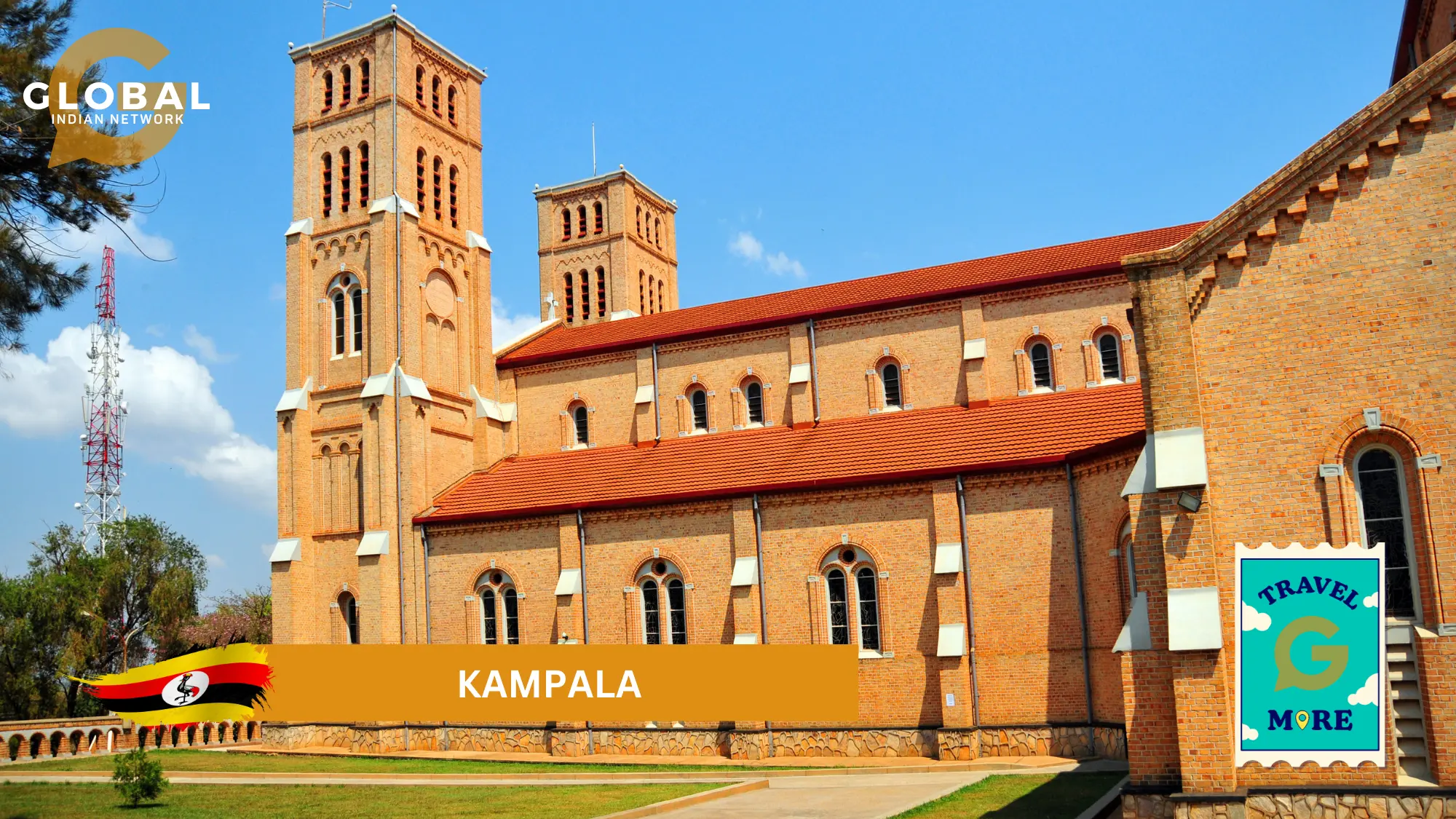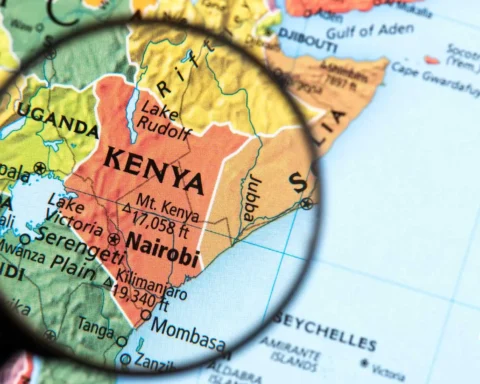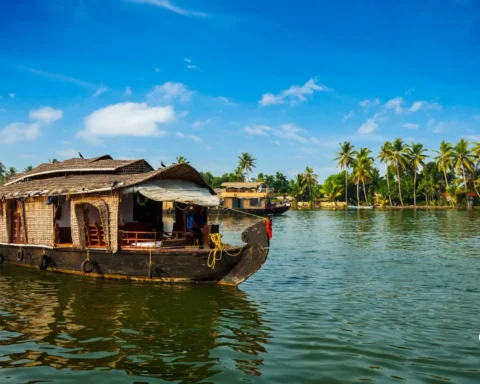Discovering the best places to visit in Kampala, Uganda, is like embarking on a thrilling adventure through a city that beautifully weaves together tradition and modernity. In this guide, we will take you on a captivating journey to explore the top 25 destinations that promise an unforgettable experience in Kampala in 2023.
Whether you're a history enthusiast, a nature lover, or a food connoisseur, Kampala offers something extraordinary for every traveller. So, let's delve into the essence of this dynamic city and unveil the treasures that await you.
Table of Contents
Kampala City Tour: Exploring the Vibrant Heart of the City
Kampala, the capital city of Uganda, is a bustling metropolis that offers a rich tapestry of cultural heritage, historical landmarks, and modern wonders. It is one of the largest cities there. A city tour in Kampala is an immersive experience that allows you to dive deep into the heart of this dynamic African capital. Here's a breakdown of what you can expect when exploring the vibrant heart of the city:
Lake Victoria: Your journey through Kampala often starts at the shores of Lake Victoria, the largest lake in Africa. It provides picturesque views and serves as a hub for various water activities and relaxation.
Kampala City Center: The heart of Kampala city boasts a mix of architectural styles, from colonial-era buildings to modern skyscrapers. You can stroll through the streets, taking in the lively atmosphere of the city and exploring markets, cafes, and shops.
Cultural Heritage: Kampala is a melting pot of cultures and ethnicities. Explore neighbourhoods like Buganda Road and Nakasero to discover cultural centres, art galleries, and museums that showcase Uganda's rich cultural heritage, including its music and dance traditions, often accompanied by vibrant musical instruments.
Torture Chambers - Idi Amin's Regime: Delve into the darker side of Uganda's history with a visit to the Uganda Museum, which houses exhibitions related to the country's troubled past, including the torture chambers used during Idi Amin's regime.
Owino Market: For a taste of local life and vibrant commerce, head to Owino Market, one of the largest markets in Kampala. Here, you can shop for colourful fabrics, traditional crafts, and fresh produce, immersing yourself in the city's daily hustle and bustle.
Tourist Attractions: Kampala is home to several notable tourist attractions, including the Uganda National Mosque (Gaddafi Mosque) and the Independence Monument, symbolising Uganda's road to independence.
Modern Wonders: Witness the modern side of Kampala with visits to innovative spaces like The Square, a contemporary lifestyle and entertainment complex, or the Acacia Mall, where you can enjoy shopping and dining in a modern environment.
Uganda Museum
The Uganda Museum in Kampala city is a captivating repository of the country's rich cultural heritage and history. It offers visitors a glimpse into Uganda's diverse traditions, artefacts, and historical narratives, making it a must-visit destination for anyone seeking a deeper understanding of the nation's past and present.
Kabaka's Palace
Kabaka's Palace, also known as Lubiri Palace, is a historic and culturally significant landmark in Kampala, Uganda. This palace serves as the official residence and administrative centre for the Kabaka, the traditional ruler of the Buganda Kingdom.
Constructed in the late 19th century during the reign of Kabaka Mwanga II, the palace boasts a unique blend of Buganda's traditional architectural elements and modern design. It features thatched roofs, wooden beams, and intricate artwork representing Buganda's cultural heritage.
The palace is not only a royal residence but also houses the Buganda Kingdom's parliament, known as the Lukiiko, where important decisions are made. It also serves as a venue for cultural events and ceremonies.
Kabaka's Palace has played a pivotal role in Uganda's pre-colonial and post-independence history, making it an enduring symbol of Buganda's cultural identity. While visitors can explore its exterior and gardens, access to the interior is typically restricted to authorized personnel and special occasions. This palace stands as a testament to the rich heritage of the Buganda Kingdom and remains a vital part of Uganda's cultural and historical heritage.
Kasubi Tombs
The Kasubi Tombs, located in Kampala, Uganda, are a UNESCO World Heritage Site and a sacred cultural treasure of the Baganda people. These tombs are the final resting place for the four Buganda kings, including Mutesa I, Mwanga II, Daudi Chwa II, and Edward Mutesa II.
The architectural style of the Kasubi Tombs is a prime example of traditional Baganda craftsmanship. The main structure, called the Muzibu Azaala Mpanga, is a thatched mausoleum built using wooden poles and reeds. Its construction techniques have been passed down through generations, reflecting the cultural heritage of the Baganda Kingdom.
The tombs hold great spiritual and cultural significance for the Baganda people. They are a place for honouring the deceased kings and serve as a site for various ceremonies, rituals, and cultural events. The Baganda believe that the spirits of the kings continue to protect and guide the kingdom from this sacred place.
Lakes and Falls
Kampala and its surrounding regions in Uganda are blessed with diverse lakes and falls, each offering a unique natural experience. Let's explore some of these captivating water bodies and cascades:
1. Lake Victoria: As the largest tropical lake in Africa and an iconic feature of Uganda's landscape, Lake Victoria's azure waters stretch out majestically from the northern fringes of Kampala. Its vastness and beauty make it a focal point for water-based activities, fishing communities, and lakeside resorts.
2. Lake Bunyoni: Located a bit farther from Kampala, Lake Bunyoni is often referred to as the "Switzerland of Africa" due to its picturesque surroundings. It's a serene destination perfect for canoeing, hiking, and immersing oneself in the tranquil ambience of this volcanic crater lake.
3. Lake Edward: Situated in the Albertine Rift, Lake Edward is one of the Great Lakes of Africa. It shares its shoreline with Queen Elizabeth National Park, offering opportunities for wildlife viewing. It's a haven for birdwatchers and nature enthusiasts.
4. Murchison Falls: The magnificent Murchison Falls, found within Murchison Falls National Park, is a breathtaking spectacle where the Nile River squeezes through a narrow gorge, creating a powerful waterfall. The falls are a prime spot for boat safaris and game drives in Uganda's largest national park. Murchison Falls proves to be a significant tourist attraction.
5. Sipi Falls: In the eastern region, Sipi Falls is a series of three stunning waterfalls nestled in the foothills of Mount Elgon. It's a popular trekking destination, and visitors can explore coffee plantations in the area. Sipi Falls is a part of the core team in popular tourist attractions.
6. Lake George: Lake George, connected to Lake Edward by the Kazinga Channel, is another jewel within Queen Elizabeth National Park. It offers scenic boat cruises and a chance to spot abundant wildlife, including hippos and crocodiles. Boat cruises prove to be an important attraction.
7. Lake Nabugabo: Lake Nabugabo is a man-made lake near Masaka, a peaceful retreat for those seeking a quiet escape. Lake Nabugabo is perfect for swimming, canoeing, and enjoying the rural Ugandan countryside. Lake Nabugabo is crucial to forming the tourist attraction team
8. Lake Mburo: Closer to Kampala, Lake Mburo National Park boasts its eponymous lake. Lake Mburo is excellent for wildlife safaris, horseback riding, and birdwatching. The lake is dotted with hippos and offers boat trips.
9. Lake Mutanda: Tucked away in southwestern Uganda, Lake Mutanda is framed by lush hills and is an ideal base for gorilla trekking adventures. The scenery is simply breathtaking, making it a popular spot for photographers.
10. Griffin Falls: Located in the foothills of the Rwenzori Mountains, Griffin Falls is a hidden gem with a dramatic waterfall and pristine pools. Griffin Falls is a spot for refreshing dips and hiking. Griffin Falls is also part of the core team of attractions.
11. Lake Bunyonyi: Lake Bunyonyi is known for being very safe, devoid of any vicious creatures that might attack you and is a hub for many bird species.
National Parks
Kampala, the vibrant capital city of Uganda, is not only a bustling urban centre but also a gateway to some of the country's most magnificent natural wonders. In this account, we will explore the beauty of Uganda's national parks, each offering a unique and awe-inspiring experience.
- Murchison Falls National Park: Located in northwestern Uganda, Murchison Falls National Park is a testament to the raw power of nature. The park is named after the dramatic Murchison Falls, where the Nile River is funnelled through a narrow gorge, creating a thunderous waterfall. Visitors can embark on thrilling game drives and boat safaris to witness diverse wildlife, including lions, elephants, hippos, and countless bird species.
- Bwindi Impenetrable National Park: Bwindi National Park, a UNESCO World Heritage Site, is a sanctuary for endangered mountain gorillas. Nestled in southwestern Uganda, this dense and lush forest offers a once-in-a-lifetime opportunity to trek through the jungle and observe these gentle giants in their natural habitat. The intimate encounter with gorillas is a humbling experience that leaves an indelible mark on every visitor.
- Kibale Forest National Park: Venture westward from Kampala to Kibale Forest National Park, a haven for primate enthusiasts. Kibale is renowned for its population of chimpanzees, and trekking through the lush jungle in search of these intelligent creatures is an unforgettable adventure. The park is also home to various monkey species and a remarkable diversity of birdlife, making it a paradise for nature lovers.
- Mount Elgon National Park: For those seeking a high-altitude experience, Mount Elgon National Park is a hidden gem in eastern Uganda. This extinct volcano offers challenging hikes to its summit, where you can enjoy panoramic views of the surrounding landscape. The park is also rich in biodiversity, with numerous bird species, mammals, and unique flora waiting to be discovered.
Mountains and Hills
Kampala, the capital city of Uganda, is a city of hills and mountains, offering residents and visitors alike a picturesque landscape that combines urban life with natural beauty. Here, we explore prominent hills and distant mountains that define the city's topography and charm.
- Namirembe Hill: Namirembe Hill, often referred to as the "Hill of Peace," is one of the seven hills of Kampala. It is home to the Namirembe Cathedral, a majestic structure that dominates the skyline of Kampala. The hill provides a serene atmosphere, and from its elevated position, visitors can enjoy breathtaking views of the city below, especially during the golden hours of sunrise and sunset.
- Kikaya Hill: Kikaya Hill is known for its lush greenery and quiet surroundings. This hill is a peaceful escape from the bustling city below. The ascent to the top offers a glimpse of the diverse flora and fauna, and it's not uncommon to spot various bird species and small wildlife during a hike. Kikaya Hill is a hidden gem for nature enthusiasts.
- Mengo Hill: Mengo Hill is known for its historical significance as it houses the Lubiri Palace, which was once the seat of the Buganda Kingdom. The lush gardens and traditional architecture make this hill a cultural and historical treasure. It's also an excellent place to learn. It represents Uganda's rich heritage.
- Nakasero Hill: Nakasero Hill is at the heart of Kampala's central business district. Amidst the bustling urban life, you can find the Nakasero Market, a vibrant place where locals come to buy fresh produce and goods. It's a fusion of traditional and modern Kampala and a testament to the city's dynamic character.
- Mt. Elgon: While not part of the city, Mt. Elgon is a notable mountain in eastern Uganda, not too far from Kampala. Mt. Elgon is an extinct volcano known for its vast caldera, waterfalls, and diverse flora and fauna. Mt. Elgon offers adventurous hikes and a chance to explore caves and enjoy the breathtaking scenery.
Conclusion
There are plenty of best places to visit in Kampala, the vibrant capital city of Uganda, which offers a rich tapestry of attractions and experiences that cater to a diverse range of interests. From the historical significance of landmarks like Namirembe Hill and Mengo Hill to the bustling urban life around Nakasero Hill, the city showcases a harmonious blend of tradition and modernity. Additionally, the nearby allure of Mount Elgon and the captivating allure of golden monkeys in Uganda's national parks add an extra layer of natural beauty and biodiversity to the mix.
FAQs
What is Kampala famous for?
Kampala is Uganda's capital and largest city, with a population of 1.68 million people. It is known for its historical and cultural attractions, such as the Uganda National Museum, the Kasubi Tombs, and the Namirembe Cathedral, as well as its lively nightlife and shopping centres.
Is Kampala worth a visit?
Yes, Kampala is worth a visit. It is a dynamic and engaging city with several worthy attractions to keep you occupied for several days. Kampala has a rich and colourful history, visible in several fascinating palaces and compounds from where the nation was run until the arrival of colonialism.
How do you spend a day in Kampala?
Spend a day in Kampala by visiting historical sites like the Kasubi Tombs, exploring local markets like Nakasero Market, and ending the day with a stroll along the shores of Lake Victoria.
What is the leading tourist attraction in Uganda?
The leading tourist attraction in Uganda is Bwindi Impenetrable National Park, renowned for its population of endangered mountain gorillas and immersive gorilla trekking experiences.










